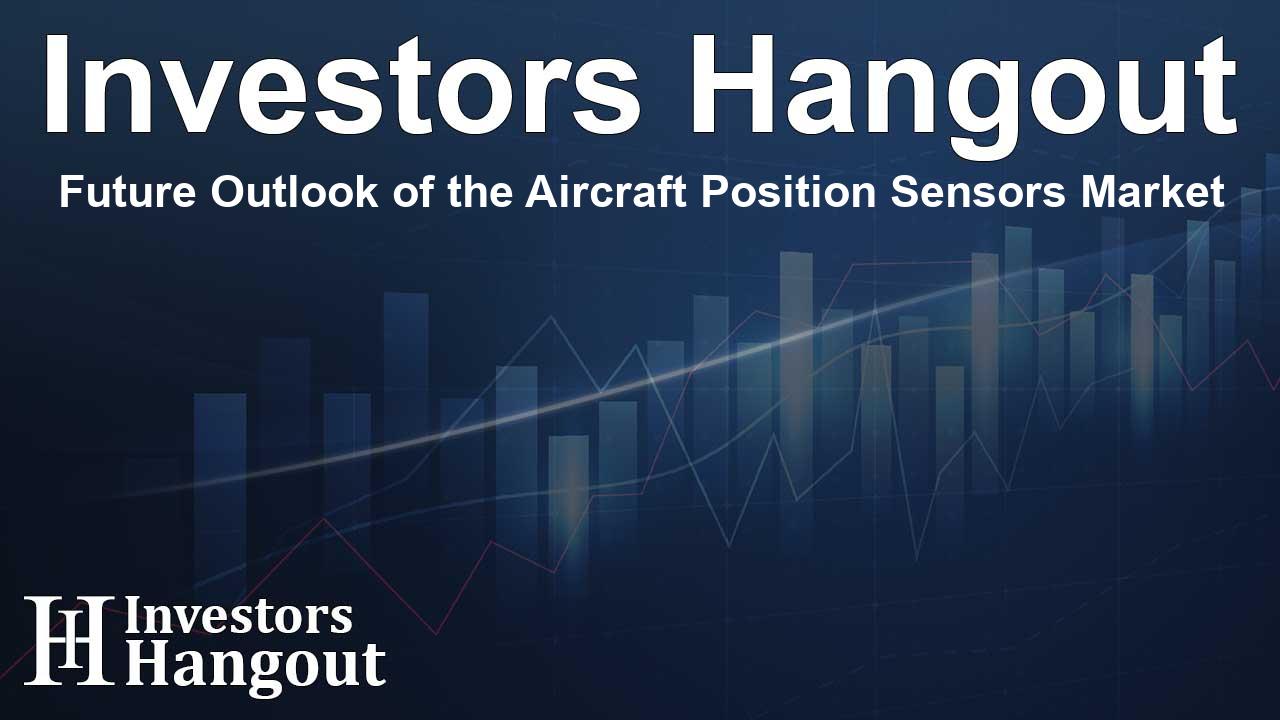Future Outlook of the Aircraft Position Sensors Market

Future Trends in the Aircraft Position Sensors Market
Recent analyses indicate that the Aircraft Position Sensors Market is projected for significant growth, with the overall market size expected to reach US$0.3 billion by 2034. Evaluating trends from this year indicates a consistent annual growth rate of 3.8% from 2024 over the subsequent decade. This growth is strongly tied to the increasing complexity and reliability required in modern aviation technologies.
An Overview of Market Dynamics
The Aircraft Position Sensors Market encapsulates a range of sensors critical to the aviation industry, particularly in commercial aircraft. Recent insights suggest that market demand is primarily stemming from heightened air traffic globally. As commercial airlines expand their fleets to meet rising passenger demands, the reliance on efficient and precise position sensing grows.
Market Drivers
Several key factors are driving the growth of this market. First is the ongoing expansion of global air traffic. New airline routes, particularly in emerging markets, necessitate the introduction of advanced aircraft technologies, including robust position sensors. The growing number of commercial aircraft means an increase in installed sensors across numerous systems such as landing gear, flight controls, and environmental systems.
Technological Advances
Technology is also playing a crucial role in shaping the future of this market. Innovations, including miniaturized sensor technologies and the melding of various sensor types into compact systems, are leading to increased efficiency and lower operational costs. This technological advancement effectively addresses the weight and complexity concerns in modern aircraft.
Segmentation Analysis
This market is perfectly segmented by aircraft type, sensor type, and application, providing a detailed picture of where and how sensors are utilized in aviation. The segmentation ensures tailored growth strategies tailored to each segment's unique requirements and potential.
Aircraft Type Segmentation
In terms of aircraft types, commercial aviation leads the charge in sensor usage. Commercial aircraft require multiple sensors integrated into complex systems, which helps heighten safety and operational efficiency. This constant demand for position sensors across varied aircraft systems is one of the primary catalysts in fostering market growth.
Leading Sensor Types
LVDT sensors are expected to take the forefront in the upcoming years, given their reputation for reliability and accuracy under extreme conditions. Conversely, RVDT sensors, which excel in precision angular measurements, are projected to see rapid growth due to shifts towards more sophisticated flight control systems.
Regional Insights: The Competitive Landscape
Geographically, North America remains at the forefront of the Aircraft Position Sensors Market. This region has established itself as a central hub for aerospace manufacturing, featuring a solid presence of original equipment manufacturers (OEMs) and supporting industries. With further investments planned for expanding aerospace programs, North America is expected to sustain its leading position in the market.
Emerging Markets in the Asia-Pacific
Not far behind, the Asia-Pacific region is anticipated to witness the fastest growth. The emergence of local manufacturers and assembly facilities, particularly in countries like China and India, is expected to drive this demand. It showcases a promising opportunity for suppliers and technology firms to penetrate this growing market.
Conclusion: The Road Ahead
In conclusion, the Aircraft Position Sensors Market is on a solid trajectory of growth fuelled by increased air traffic, technological advancements, and expanding markets. Companies involved in this sector need to adapt to evolving trends to capitalize on upcoming opportunities. The interplay between reliable airplane technology and the growing need for precision in aircraft operations will be pivotal in shaping the future of this market.
Frequently Asked Questions
What is the projected growth rate for the Aircraft Position Sensors Market?
The market is expected to grow at a CAGR of 3.8% from 2024 to 2034.
What is the estimated market size by 2034?
The Aircraft Position Sensors Market is predicted to reach US$0.3 billion by 2034.
Which type of aircraft uses these sensors the most?
Commercial aircraft are the largest users of aircraft position sensors due to their complex operational needs.
What technological innovations are impacting this market?
Miniaturized, MEMS-based sensors and integrated sensor technology are key innovations driving growth.
Which regions are leading the demand for aircraft position sensors?
North America remains the largest market, while Asia-Pacific is expected to grow the fastest due to rising investments in aviation technology.
About The Author
Contact Ryan Hughes privately here. Or send an email with ATTN: Ryan Hughes as the subject to contact@investorshangout.com.
About Investors Hangout
Investors Hangout is a leading online stock forum for financial discussion and learning, offering a wide range of free tools and resources. It draws in traders of all levels, who exchange market knowledge, investigate trading tactics, and keep an eye on industry developments in real time. Featuring financial articles, stock message boards, quotes, charts, company profiles, and live news updates. Through cooperative learning and a wealth of informational resources, it helps users from novices creating their first portfolios to experts honing their techniques. Join Investors Hangout today: https://investorshangout.com/
The content of this article is based on factual, publicly available information and does not represent legal, financial, or investment advice. Investors Hangout does not offer financial advice, and the author is not a licensed financial advisor. Consult a qualified advisor before making any financial or investment decisions based on this article. This article should not be considered advice to purchase, sell, or hold any securities or other investments. If any of the material provided here is inaccurate, please contact us for corrections.
